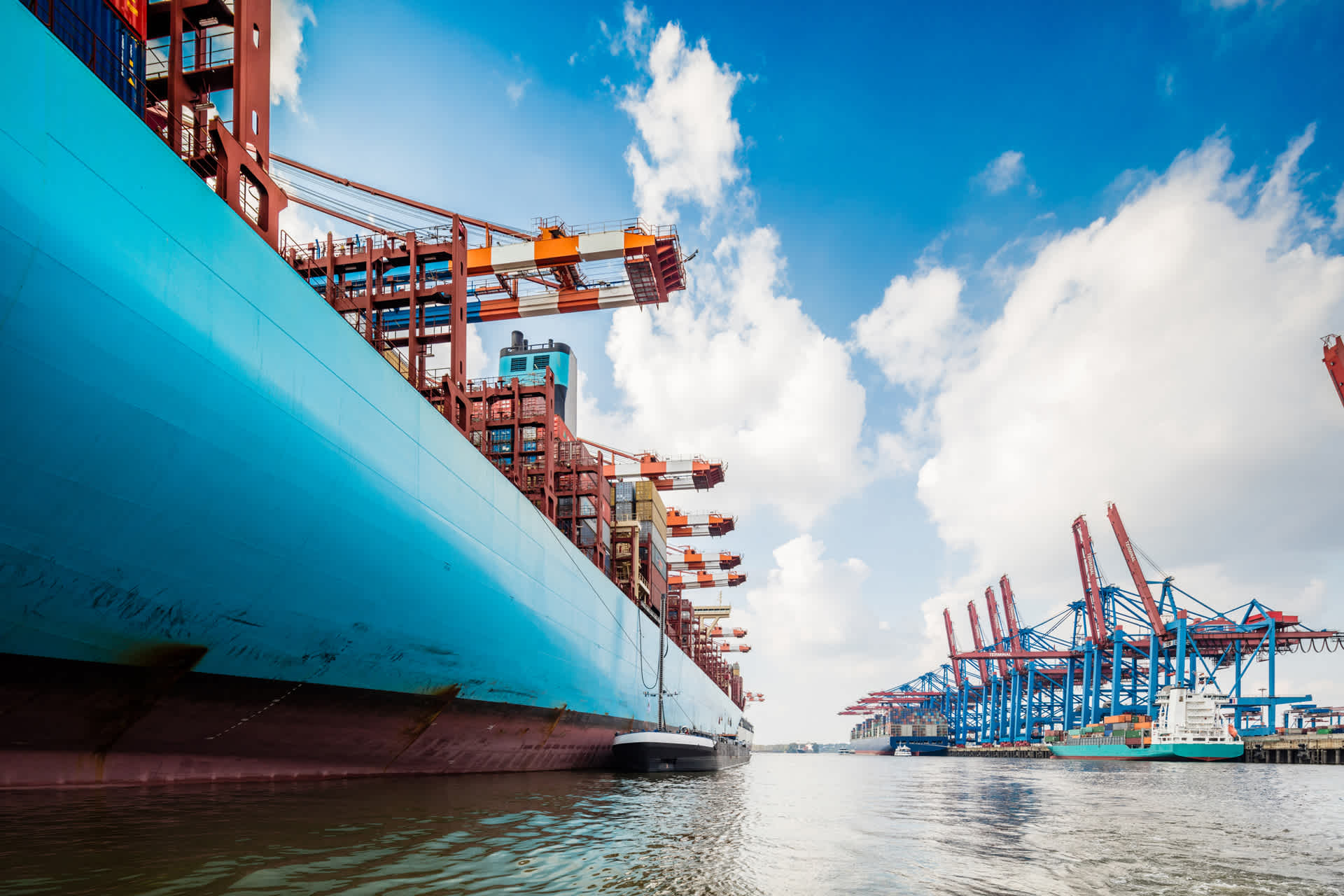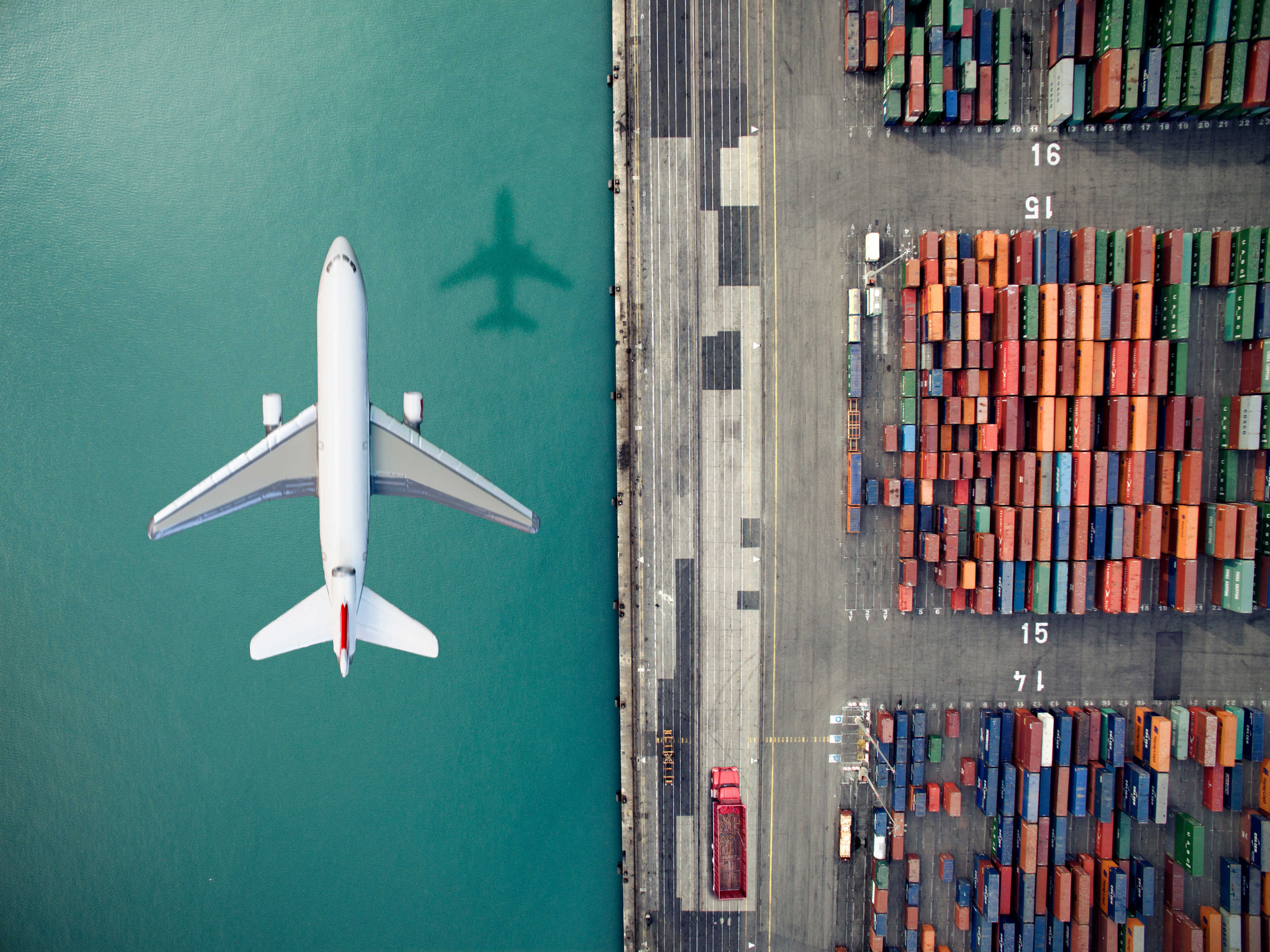Global Logistics Update
Freight Market Update: February 8, 2022
Ocean and air freight rates and trends; customs and trade industry news plus Covid-19 impacts for the week of February 8, 2022.
Freight Market Update: February 8, 2022
North America Freight Market Update Live: Thurs, February 10 @ 8:30 am PST | 11:30 am EST
European Freight Market Update Live: February 15 at 16:00 CET / 15:00 GMT
Ocean Freight Market Update
Asia → North America (TPEB)
- Carriers anticipate strong post-Lunar New Year demand despite some Covid-related uncertainties that shippers are citing surrounding timelines for resuming production. Regardless, inventories remain low, and extra-loader opportunities are expected to stay in-demand, as space outlook overall is tight. Congestion and trucking capacity shortages are severe with no indications for easing. Carriers continue to prefer IPI cargo and even East Coast bookings due to unsustainable congestion in LA/LB.
- Rates Rate levels remain elevated, and the premium market is strong.
- Space Critical
- Capacity/Equipment Critical/Severe Undercapacity
- Recommendation Book at least 4 weeks prior to CRD. Consider premium options and carrier IPIs through the PSW gateway. Be flexible in regard to equipment and routings.
Asia → Europe (FEWB)
- One week after Lunar New Year, there is a slowdown in booking intake as factories are only gradually resuming work now. However, space and equipment continue to be tight due to the pre-LNY rolling pool that carriers built up and because of a high amount of blank sailings coming up in weeks 8, 9 and 10. These are not only the planned blank sailings but also ad hoc ones due to schedule delays. Schedule reliability is very low and there are still many vessels shifting from the LNY period. New bookings are expected to pick up again in one to two weeks from now.
- Rates Rates remain at a high level for the post-CNY period mostly with extensions until the end of February.
- Space Critical space situation
- Capacity/Equipment Severe equipment shortage across all Asia origins.
- Recommendation Book at least 3 to 4 weeks prior to CRD. Consider premium options, which may be limited. Be flexible in regard to equipment.
Europe → North America (TAWB)
- Schedule reliability in 2021 was 50% below the average performance over the past 8 years. In 2021 carriers added only 2.5% of capacity in the Transatlantic Westbound trade compared to 2020 to make up for the space lost to congestion vs. 31% and 10% of additional capacity in the TPEB and FEWB trades respectively.
- Congestion spreading to USEC ports. Carriers currently report the longest vessel wait times in Charleston and Miami, followed by Norfolk and Houston, while the situation in New York is manageable. LA/LGB situation is still critical while yard congestion gets slightly better.
- Rates Ocean levels continue to remain high with further increases expected as from February.
- Space Critical, especially to the USWC
- Capacity/Equipment Capacity remains tight for both North Europe and Mediterranean services. Better equipment availability at port. Shortages remain at inland depots.
- Recommendation: Book 6 or more weeks prior to CRD. Request premium service for higher reliability and no-roll guarantees.
Indian Subcontinent → North America
- Key services constrained by congestion in the US. Sailings on services to both coasts of the US have been bunched or blanked due to ongoing port congestion. This is resulting in inconsistent port calls at origin.
- Rates expected in increase in 2H Feburary
- Space to the USWC is and will remain a challenge into 2022. Port omissions on services to the USWC continue to cut capacity out of the ISC. Recommendation is to move on premium services or look for alternative routing to USEC and transload to final destination.
- Space to the USEC will be difficult from mid to end of February as bunched vessels off the coast of USEC is resulting in longer turn-around time back to origin. This leaves a gap of sailings for the most consistent services typically relied upon for ISC-USEC
- Equipment remains a challenge at smaller Indian ports in the South and South-East as well as inland container depots (ICDs). Carriers are encouraging shippers’ use of their own origin carriage services to mitigate equipment shortages. Equipment is normalized at key ports such as Nhava Sheva and Mundra. Recommendation remains to load via wet port instead of using ICDs to avoid delays and accessorial fees.
North America → Asia
- Vessel arrivals and available capacity remain fluid for USWC POLs. Rail availability over the USWC is limited as carriers are strictly adhering to allocations. USEC situation sees Savannah operations improving but increasing delays around Charleston and New York. Erratic vessel schedules continue to create void sailings and delays in schedules creating significant challenges with posted earliest return dates and vessel cut-offs at the port.
- Rates There have been a few GRI advisories posted for mid-February specific to transshipment ports as well as Oceania destinations.
- Equipment Deficits on containers and chassis continue to plague IPI origins. Availability for standard equipment at ports has not been an issue, but any special equipment is hard to come by.
- Recommendation Please place bookings 4 to 6 weeks in advance to secure your equipment and vessel space.
North America → Europe
- There is available capacity on the TAEB trade from the US East and Gulf Coasts although there have been some instances where conditions were tight due to operational issues caused by phasing in new vessels. US West Coast service to Europe is extremely tight due to void sailings and skipped ports caused by systematic delays. Seattle port of call suspended indefinitely.
- Rates There is one small GRI announced for February for the US East Coast.
- Equipment Deficits are still plaguing IPI origins. Availability for standard equipment at ports has not been an issue, but any special equipment is hard to come by.
- Please place bookings 3 to 4 weeks in advance for East Coast/Gulf sailings and 6 weeks for Pacific Coast sailings.
Air Freight Market Update
Asia
- N. China: The market is slow post-LNY with some carriers canceling flights due to weak demand and rates dropping. Factories are expected to gradually resume operations this week and the market is likely to bounce back soon.
- S. China: TPEB flights continue to be canceled as result of positive Covid cases. FEWB rates continue to drop as demand continues to lag behind. Factories are expected to resume operations later this week.
- Taiwan: The market remains stable with no significant changes in rates or capacity post-LNY. Capacity to the EU has been reduced slightly as airlines cope with positive Covid cases.
- SE Asia: Ex-Vietnam TPEB demand and rates decreased compared to previous weeks. Many factories will resume operations later this week and demand is expected to increase next week. The government is planning to fully open borders in March so more capacity can be expected in the market.
Europe
- Demand is steady, and the previous week’s capacity squeezes keeps rates on the higher side. Capacity into ORD is slightly tighter than that of LAX/JFK.
- Delays from the previous weeks have been cleared, and most airports ex EU are running at a normal pace for the time of year.
- Some carriers are still offering deferred routings into major US hubs via secondary airports where they have regular passenger capacity. If the lead time can take it, this deferred option can be very suitable and offer rates below the standard market level
- Advice remains in place ex-EU: continue to place bookings early for optimal rates and solutions.
Americas
- Demand to Asia is picking up after CNY while Europe and Latam will remain stable.
- Capacity is manageable and airlines are back on schedule.
- LAX/ORD/JFK terminal ground-handlers are busy, but are not facing the impairing backlogs from the past months, which has a positive effect on the export side.
- Larger shipments from major outbound gateways can take 2 to 3 days from booking to uplift.
- Most terminals provide reduced free time for storage, and have earlier close-outs for exports to accommodate throughput times and screening requirements.
- Rates to Latam, Europe and Asia have not experienced significant changes, but fuel has slightly increased.
Trucking & Intermodal
Asia
- Trucking capacity recovery: China trucking market capacity starts to recover after Chinese New Year (CNY) holiday. But at this moment only around 40~50% capacity has resumed. Normally, the full recovery of trucking capacity is after 2/15 (The Lantern Festival).
Europe
- Truck, barge and rail capacity are still under pressure due to high demand. Barge and rail capacity slowly increasing, however due to weather and congestion reasons pick-up delays to be expected at the Ocean Ports
- Rates. High fuel prices force carriers to further increase their fuel surcharge fees
- Space. Sufficient space on barge and rail.
- Recommendation. Early bookings and flexible unloading/delivery times at receiving warehouses remain key to obtain truck, barge and rail slots
Customs and Compliance News
Oral Arguments for Section 301 Litigation Point to Uncertain Verdict
On February 1, the Court of International Trade (CIT) held oral arguments on the pending Section 301 litigation. The Court listened to arguments addressing the legality of the Trump administration's imposition of List 3 and 4A Section 301 Tariffs, whether the Court had the jurisdiction to decide the matter, and whether the USTR followed correct administrative practices with regards to comments submitted prior to the List 3 and 4A imposition. The CIT is expected to rule sometime during or after Q3 2022, with appeals to the Court of Appeals for the Federal Circuit and the Supreme Court afterwards sure to follow.
US House Passes COMPETES Act, Sending Trade Policy into Conference
The House passed the COMPETES Act, setting up a prolonged and arduous conference process whereby the House and Senate will seek to craft a compromise bill acceptable to both chambers. The Biden Administration is eager to see the conference process move with haste, while Senators and Members of Congress are less optimistic about a swift resolution.
US and Japan Resolve Section 232 Steel Tariff Dispute
The US and Japan announced a solution to the Section 232 tariffs, allowing Japanese steel products to enter the US under a tariff rate quota, thereby excluding the products from Section 232 tariff application. The agreement does not impact Section 232 tariffs on Japanese aluminum. The US will provide more details on quota usage and made it clear that the quota amounts can change with demand.
Factory Output News
- China and Russia partnership in the fields of energy and minerals, agriculture and forestry development, trade and logistics, and industrial manufacturing will reach a new record high in the future. Source
- United States The trade deficit increased in December according to the US Bureau of Economic Analysis and the US Census Bureau. Exports of goods increased $2.0 billion, primarily driven by increases in consumer goods, capital goods, automotive vehicles, and industrial supplies. Source
- Vietnam Manufacturing purchasing manager index (PMI) rose to 53.7 in January, indicating strong growth and positive outlook. Source
- Indonesia Continued expansion of manufacturing sector with increase in foreign sales. Source
- Malaysia and Thailand cross-border trade has increased by 30.36% in 2021 with the reopening of checkpoints and is expected to expand by another 5 to 7% this year. Source
- Singapore Manufacturing continues to see growth, but at a slower pace in January due to rise in Omicron cases and major economies slow down. Source
- Pakistan Exports to US reached $570M in Jan, representing 25% YoY growth. Source
Freight Market News
Price of Ship Fuel Poised to Hit All-Time High FreightWaves has reported that the price of marine fuel, which fuels container ships, is surging, rising even faster than landside fuel prices. The fuel cost is frequently passed from shipowners to cargo shippers.
Billions Set to Boost US Port Projects Supply Chain Dive has reported that federal aid from the recently enacted Infrastructure Investment and Jobs Act, in addition to the United States Maritime Administration Port Infrastructure Development Program, will begin going towards 25 port projects. SCD has the specific funding amount and project descriptions detailed.
Freight Market Update is a complimentary service from Flexport, the modern freight forwarder. If you're not already a subscriber, we invite you to subscribe here.
Please note that the information in our publications is compiled from a variety of sources based on the information we have to date. This information is provided to our community for informational purposes only, and we do not accept any liability or responsibility for reliance on the information contained herein.


